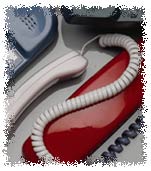


1. Numbers: The numbers 0 to 10 are listed in the vocabularies of lesson 10 and 11. For multiples of ten, the multiplier precedes 十 (shí “ten”. 20 then is 二十 (èrshí, that is 2x10; 30 is 三十 (sánshí, and so on. In compound numbers, units are added to the tens so 12 is 十二 (shí'er), that is 10+2; 17 is 十七 (shíqī, 85 is 八十五 (bāshí wŭ), that is 80+5, etc. 2. Using the tag question 好吗 to make a suggestion or to ask for a permission: 好吗 can work as a tag to a statement. The function of the tag is to turn the statement in to a suggestion or a request. For example: 我们看电视,好吗? Wŏmen kàn diànshì, hăo ma? Let’s/we’ll watch TV, OK? 我用你的车,好吗? Wŏ yòng nĭde chē hăo ma? May I use your car? To express consent and agreement, the response is usually “好 ” or “ 好啊”. 我们喝咖啡,好吗? Wŏmen hē kāfēi, hăo ma? Let’s have coffee, OK? 好啊。 Hăo ā. Fine. To express disagreement, the response could be “对不起 ” or “不行” followed by an explanation. 我用你的车, 好吗? Wŏ yòng nĭde chē, hăo ma? May I use your car? 不行。我的车不在这儿。 Bù xíng. Wŏde chē bú zài zhèr. No. My car is not here. 对不起。我的车不在这儿。 Duìbùqĭ. Wŏde chē bú zài zhèr. Sorry. My car isn’t here. 3. The phrase 一下: The phrase 一下 always follows a verb to indicate that the action expressed by the verb is informal and does not last long. For example: 这是你的书吗?我看一下,好吗? Zhè shì nĭde shū ma? Wŏ kàn yīxià, hăo ma? Is this your book? May I take a look? Note that 一下 is often used when the speaker is making a suggestion, and asking for a permission, for it carries the tone of politeness.